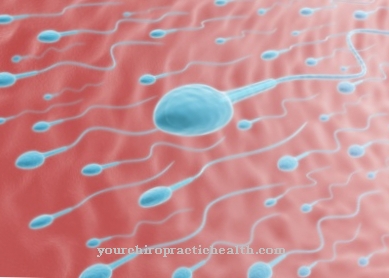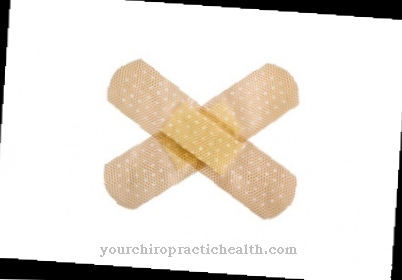To be used for dental restoration in the event of caries Milling, also known colloquially as a drill, is used in every dental practice. These instruments are also used in dental surgery, particularly in jaw operations.
What is a milling machine?

A milling cutter is defined as a tool in which material is removed by means of a rotating movement or a fixed body is brought into a certain shape. Milling is closely related to drilling. While drilling is only carried out in one direction, milling takes place in all spatial positions, i.e. three-dimensionally.
The rotating tool, which is provided with wedge-shaped cutting edges, is brought up to the stationary object to be processed for this purpose. The cutting edges penetrate the object and remove material. This material removal is determined by the desired penetration depth and feed.
In dentistry, milling cutters made of hard metals are mainly used. Hard metal is a sintered mixture of hard material, mostly tungsten carbide, and a binding agent. These materials are characterized by a very high level of hardness and wear resistance and are also easy to sterilize. Alternatively, steel cutters or, especially in jaw surgery, cutters equipped with natural diamonds are used. When using hard metal or diamond milling cutters, it should be noted that these materials are extremely brittle and can break quickly. Therefore, care must be taken to ensure that as few vibrations as possible occur when working on the diseased tooth.
Shapes, types & types
The most commonly used burr in dentistry is the ball burr. Thanks to its spherical shape, this instrument can be used universally; it is mainly used to remove carious areas on or in the tooth. With this type, a special cutting edge geometry ensures fast and gentle material removal. As a rule, the cutting edges are also serrated, which means that work is quiet and vibration-free. Since you can work with minimal pressure, thermally induced trauma to the tooth root is avoided.
For root therapy, cutters with an elongated head are used. These periodond instruments rotate at extremely high speeds (8000 - 12000 min-1) and are used to clean or smooth exposed root canals. These burrs are also used for root surfaces in deep pockets or in hard-to-reach tooth spaces.
Finishing tools are used to smooth the surfaces of the tooth. These milling cutters can have different geometries, round or conical attachments are the rule here. The cutting edges of the finishers are less designed for material removal than for smoothing surface roughness. Therefore, the toothing is narrower and the cutting angle smaller than with milling cutters that are supposed to remove defective tooth material.
Another milling machine is the crown cutter. This instrument, which has a very special cutting edge geometry, is designed for processing non-precious metal alloys, i.e. removing amalgam fillings or crowns.
In maxillofacial surgery, the Lindemann milling cutter, named after its inventor August Lindemann, is used to cut through bones or teeth. This milling cutter is a mixture of milling instrument and saw and, thanks to its special shape, which tapers towards the tip, can be used particularly gently during operations.
Structure & functionality
Regardless of the shape and purpose of use, a router always consists of a handle ("shaft") and the exchangeable router attachment. When it comes to the handle, a distinction is made between turbine and dental contra-angle handpiece. The turbine is operated by compressed air and reaches speeds of up to 450,000 rpm, but has a lower torque than the motor-driven contra-angle handpieces.
With the milling attachment, a distinction is made between the neck and the head. The head refers to the part of the burr that works directly on the tooth, while the neck is an extension between the head and the shaft. This extension maintains a distance between the head and the shaft so that the instrument can be easily inserted into the mouth.
Milling machines in the dental field work in high speed ranges between 2000 and 20,000 revolutions per minute. Due to these speeds, there are always several cutting edges in engagement, which enables the diseased tooth to be treated gently.
You can find your medication here
➔ Toothache medicationMedical & health benefits
The use of burs has revolutionized dentistry. Until the end of the 18th century, the only way to treat a diseased tooth was to remove it. It was by no means gentle on the patient. So-called "tooth breakers" often levered the teeth out of the jaw without anesthesia and stopped the bleeding by applying red-hot irons.
The New York dentist John Greenwood developed the world's first drill in 1790 - hand-operated and powered by his grandmother's spinning wheel. Much has changed in milling since then. After the electric drill was developed at the end of the 1880s, dentistry made a quantum leap, especially in the area of speed. The initial 500 min-1 has grown to 450,000 min-1 today, which made the painless tooth removal possible.
Diseased teeth not only look unsightly and can cause enormous pain, if left untreated, infections in the jaw area in particular quickly lead to sepsis, which can be life-threatening. In the past, many unhealed root inflammations led to early death.
Missing teeth also cause jaw misalignments and language problems. By using milling cutters in dentistry, the suffering of millions of people has been reduced to a bearable level and dental treatments have been largely relieved of their horror.









.jpg)



.jpg)



.jpg)







.jpg)


